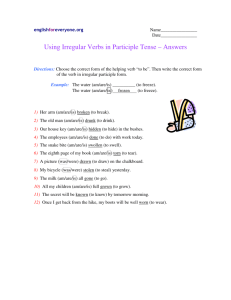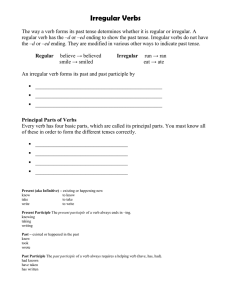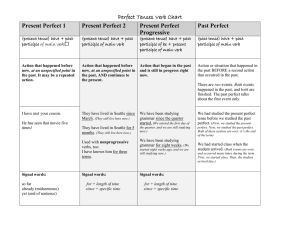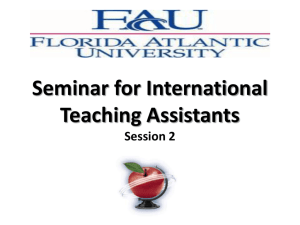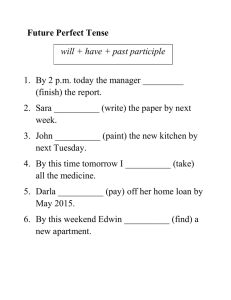The Present Perfect Tense Present Perfect
advertisement
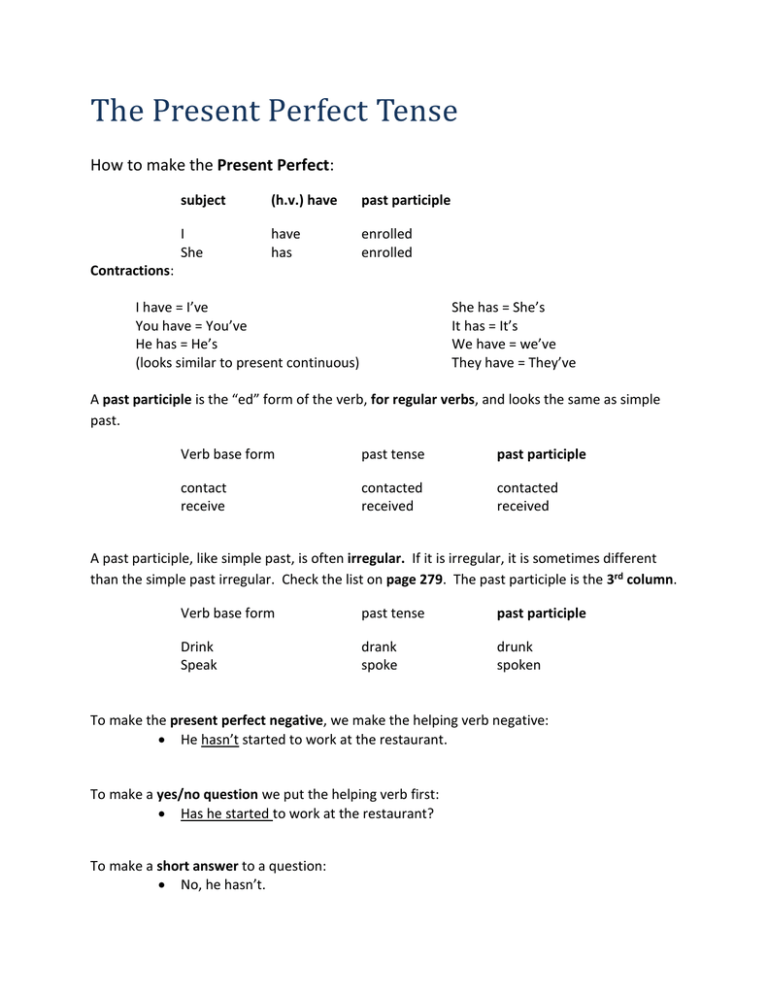
The Present Perfect Tense How to make the Present Perfect: subject (h.v.) have past participle I She have has enrolled enrolled Contractions: I have = I’ve You have = You’ve He has = He’s (looks similar to present continuous) She has = She’s It has = It’s We have = we’ve They have = They’ve A past participle is the “ed” form of the verb, for regular verbs, and looks the same as simple past. Verb base form past tense past participle contact receive contacted received contacted received A past participle, like simple past, is often irregular. If it is irregular, it is sometimes different than the simple past irregular. Check the list on page 279. The past participle is the 3rd column. Verb base form past tense past participle Drink Speak drank spoke drunk spoken To make the present perfect negative, we make the helping verb negative: He hasn’t started to work at the restaurant. To make a yes/no question we put the helping verb first: Has he started to work at the restaurant? To make a short answer to a question: No, he hasn’t. How to use the Present Perfect: The Present Perfect is a complicated verb tense. We will use it in 3 ways. (Our book only mentions 2 ways.) 1) Indefinite Time in the Past: to talk about actions that happened in the past and the exact time of the action is either unknown, or unimportant: “Sometime before now.” Steve has learned a lot from his work experience I’ve been lucky with finding work. This is similar to simple past, but notice with simple past, when the action happened is specific, and important. Steve learned how to drive a truck 2 years ago. Don’t do: Steve has learned how to drive a truck 2 years ago. To give a negative statement, we often use yet. It means that something has not happened before now. We put yet at the end of the sentence. I haven’t started my job training classes yet. We can also use yet and place it at the end of a question. Have you started you job training classes yet? 2) To talk about a repeated action in the past. Like # 1, the exact time is either unknown of or unimportant – sometime before now. I have enrolled in that English class several times. She’s checked out the company’s website many times. I’ve had a few different jobs at CDS Drug Store. 3) For or Since: The third way we use present perfect is with for or since to describe situations that started in the past and continue up to now. It often answers the question: How Long? Use “for” for a length of time: 1 month, 2 years, 10 minutes, etc. I’ve lived in the U.S for 10 years. I have been retired for 3 years. Use “since” with a specific past time – the starting time: August 9, January, my birthday, etc. I’ve lived in the U.S since 2003. I have been retired since January. I have studied English since I went to high school. (Since can be used with a time clause) Compare this with the simple past: I lived in the in the U.S for 10 years. (Means I don’t live in the U.S. now) I lived in the U.S from 2003 to 2012. o Don’t do: I lived in the U.S. since 2003 Questions using “how long” often need the present perfect because they are asking about situations that started in the past and continue up to now. How long have you lived in Seattle? How long have been retired? How long have you had your job?
